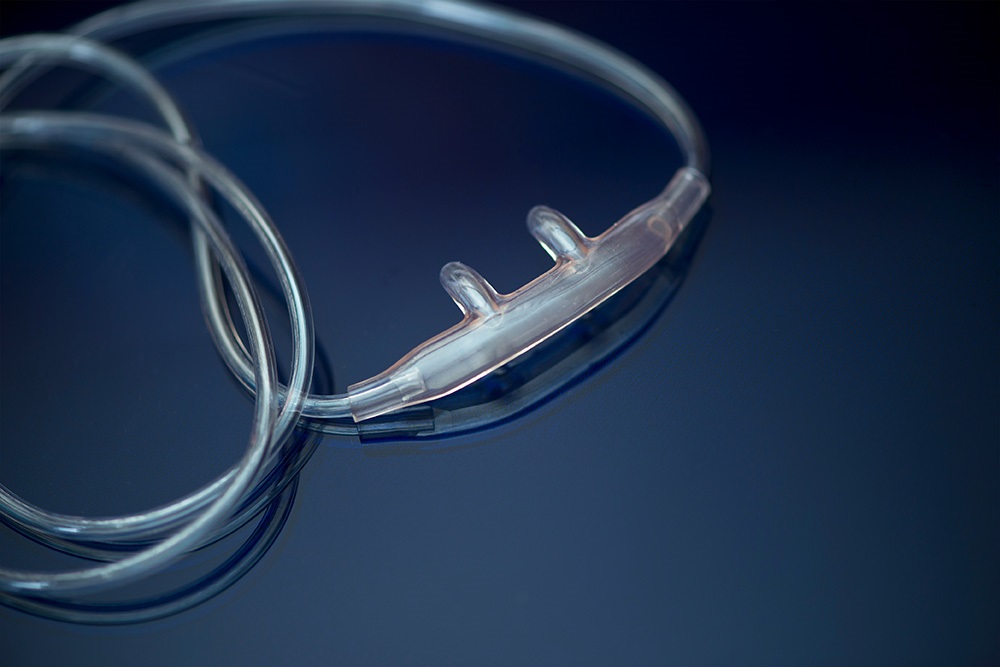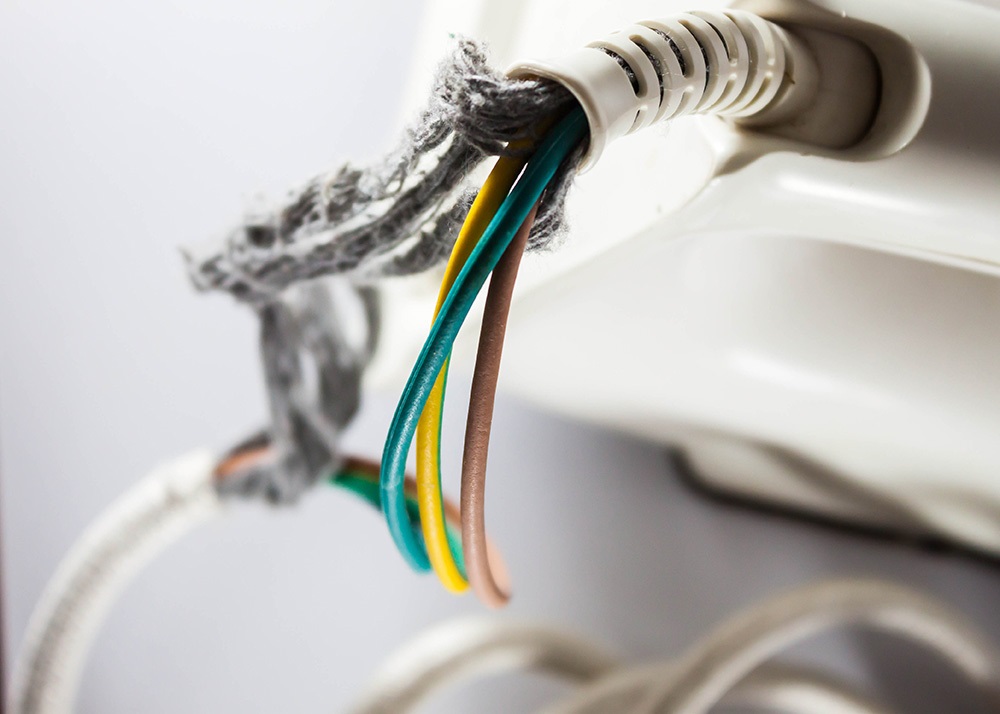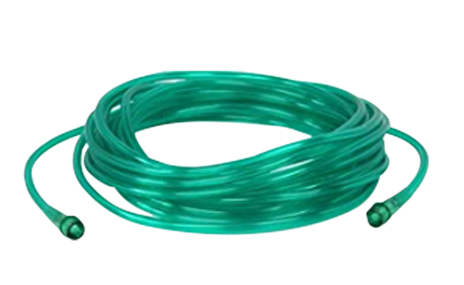
Summary
Oxygen concentrators are essential for home therapy but can encounter issues that disrupt their performance. For low oxygen flow, check for kinks in the tubing, clean the cannula, and confirm device settings. To prevent overheating, check if for proper ventilation, clean filters, and avoid direct sunlight. For power issues, check the power cord to be sure it's plugged in, and consider a backup battery or generator. If alarms go off, refer to the manual, check for blockages, and contact support if needed. To stay active, use a rolling cart, choose a portable model, or designate storage areas. To reduce noise, place the device on a flat surface and clean the compressor intake. Avoid tangled tubing by using shorter or tangle-free tubing. For dry nasal passages, use a humidifier bottle or saline spray. Keep oxygen concentration steady by scheduling regular maintenance and replacing filters and sieve beds. If the device stops unexpectedly, reset it, check the circuit breaker, and contact support if needed.
Click a link to jump to the section.
How to Troubleshoot Common Problems with Oxygen Concentrators
Oxygen concentrators play a significant role in offering continuous, reliable oxygen therapy for individuals with respiratory conditions. However, even the most dependable machines can have problems that disrupt therapy. Addressing these common concentrator issues is important to keep therapy running smoothly. Read on as we explore 10 common problems with oxygen concentrators and offer practical solutions to troubleshoot and fix them.
Problem 1: Low Oxygen Flow
When the oxygen concentrator delivers less oxygen than expected, it can hinder effective therapy. If you are experiencing a low flow of oxygen, here's what to look for when dealing with oxygen delivery interruptions:
Solution:
- Check for kinked oxygen tubing: Inspect the tubing for any bends, kinks, or physical damage that may be restricting airflow, making sure the tubing is connected properly and not twisted.
- Clean or replace the nasal cannula: When used regularly, even the best cannulas can accumulate dust, moisture, or debris. To avoid a blocked nasal cannula that obstructs airflow, wash the cannula with mild soap and water or replace it if dirty or worn. Do not attach more than 50 feet1 of extension tubing to your cannula, as it reduces oxygen concentration.
- Confirm device settings: Verify that the flow rate matches your prescribed level. Check the concentrator user manual to assist with the flow rate adjustment and adjust if necessary.


Problem 2: Device Overheating
Overheating is a sign that parts of your concentrator are likely malfunctioning. This can reduce the performance and lifespan of your oxygen concentrator. Here's how to address the issue and cooling tips to prevent future occurrences:
Solution:
- Promote proper device ventilation: Place the device in an open, well-ventilated area to reduce the chances of overheating.2 Avoid placing the concentrator against walls, furniture, or curtains, which could block vents and reduce airflow.
- Clean the filters: Dust or debris in the filters can restrict airflow, making the device work harder to circulate air and causing it to overheat. Remove and clean the oxygen filters according to the manufacturer’s instructions and make sure the filters are dry before reinserting.
- Avoid Heat Exposure: Avoid direct sunlight by placing the device in a cool, shaded spot away from windows, using curtains or blinds if needed. Keep the concentrator in a controlled environment, avoiding high temperatures that could harm the device.3
Problem 3: Power Supply Issues
Power supply issues can interfere with your oxygen concentrator's operation. If you are experiencing an electrical connection problem, here are ways to help resolve it:
Solution:
- Check the power cord: Inspect the cord for visible signs of wear, such as fraying, exposed wires, or bent prongs, replacing immediately if damaged. Do not use a damaged power cord, as it may pose a fire hazard or lead to device malfunctions.
- Test the outlet: First, make sure that the outlet is working by testing it with another device. Also, avoid plugging the device into an outlet controlled by a light switch, as it can unintentionally cut off power if switched off.
- Use a backup power source: Consider investing in backup power solutions, like a compatible backup battery or a portable generator for oxygen machines, to provide uninterrupted operation of your concentrator during emergencies or power outages.4 This preparation involves familiarizing yourself with the unit's setup and operation of your backup emergency oxygen supply.


Problem 4: Alarms Going Off Frequently
When alarms start going off frequently from your oxygen concentrator, this can indicate several issues that need attention. Understanding what the oxygen concentrator alarm codes mean and how to address persistent device warnings is important.
Solution:
- Recognizing alarms: Check the manual to identify alarms or error codes and understand their specific sounds or patterns. Addressing alarms promptly ensures your concentrator works properly and supports effective therapy.
- Common warnings: User manual troubleshooting helps determine traditional problems that may be happening with your machine. Alarms often signal system blockages, low oxygen levels, power supply issues,5 or environmental triggers. Understanding common system alarms enables efficient troubleshooting during a malfunction.
- Contact support if needed: If an alarm continues, despite troubleshooting with the manual, contact your concentrator supplier or a qualified technician for assistance.
Problem 5: Difficulty Moving the Concentrator
Oxygen concentrators can be heavy or awkward to move, creating challenges for daily use. Here are some solutions to ease mobility challenges and storage issues.
Solution:
- Use a rolling cart: Invest in a sturdy, wheeled cart with secure straps or compartments to stabilize the concentrator. Look for an oxygen cart that is easy to maneuver and works on various surfaces or ramps.
- Consider a portable model: Choose a lightweight portable oxygen concentrator for easy transport. These models often include carrying cases, built-in wheels,6 and battery power for added flexibility during travel.
- Plan designated storage areas: Store the concentrator near power outlets to reduce the need for frequent repositioning. Keep tubing and accessories near the device to minimize handling.
Problem 6: Noise from the Concentrator
Excessive noise from the oxygen concentrator can be distracting and indicate underlying issues. By paying attention to unusual sounds, you can detect issues and determine if the concentrator is not operating at its optimal level.
Solution:
- Operate on a flat surface: Make sure the concentrator is placed on a solid, level surface. This minimizes vibrations that can contribute to noise. The concentrator should not be placed near walls or other objects that can cause vibrations or rattling sounds. Doing this also keeps the device from overheating.
- Clean the compressor intake: Dust and debris can increase noise levels in the machine. Clean the intake vent regularly with a soft cloth or brush to remove dirt or blockages for compressor noise reduction.
- Check for loose parts: Make sure all screws and components are tightly secured to avoid unnecessary, oscillating sounds.
Problem 7: Tubing Too Long or Tangled
Long or tangled oxygen tubing can create obstacles, inhibit oxygen flow, and be inconvenient. Follow these tubing management solutions to make oxygen therapy easier and more efficient.
Solution:
- Use short oxygen tubing: Shorter tubing reduces tangles and improves mobility. Choose from high-visibility tubing options7 that are long enough to reach your oxygen source and desired area, but short enough not to be a tripping hazard.
- Invest in tangle-free tubing: Consider tangle-free oxygen tubing made from materials that resist twisting or coiling. This type of tubing is easier to handle and move around, enhancing convenience.
- Organize the tubing: Use clips, holders, or organizers to keep tubing and other oxygen delivery accessories tidy to prevent tangling and create a trip-free environment.


Problem 8: Dry or Irritated Nasal Passages
Dry or irritated nasal passages can be a common problem for oxygen users. Tips to provide comfort during oxygen therapy and offer nasal irritation relief include:
Solution:
- Try a humidifier bottle attachment: Connect an oxygen humidifier to your oxygen concentrator to add moisture8 to the oxygen before it reaches your nasal passages. Fill it with clean, distilled water and check the water level regularly.
- Consider a saline nasal spray: Nasal saline spray relieves dryness and helps moisturize nasal passages. Using a spray specifically designed for the nose helps avoid irritation from extended oxygen use.
- Stay hydrated: Drink plenty of water throughout the day to keep your body hydrated. Proper hydration prevents nasal dryness and irritation caused by the dry air from the oxygen concentrator.
Problem 9: Reduced Oxygen Concentration Over Time
After extended use, your device may deliver less oxygen than expected. Here's what to do to maintain your oxygen concentrator efficiency over time.
Solution:
- Schedule regular maintenance: Follow the manufacturer’s recommended maintenance guidelines to keep your concentrator running efficiently. This helps the device perform optimally, identifying early issues before they affect oxygen concentration.
- Replace filters and sieve beds: Filters capture dust and debris that can block airflow and sieve beds help separate nitrogen from oxygen. With frequent use, components become less effective and can lead to declining oxygen output. Follow the user manual for sieve bed maintenance and a filter replacement schedule, using manufacturer-approved parts to maintain performance.
Problem 10: Device Stops Working Unexpectedly
If your oxygen concentrator stops working suddenly, it can disrupt therapy. Identify and address unexpected stoppages with these emergency troubleshooting tips.
Solution:
- Perform a basic device reset: Power off the device, wait a few minutes, and turn it back on to clear minor errors or glitches. Refer to the user manual for reset instructions, as some models include a dedicated reset button or function in the settings.
- Check the circuit breaker: Problems with the power supply can cause the device to stop, so verify that the machine is plugged into a working outlet. Circuit breaker checks verify the outlet isn't overloaded or tripped. If it is tripped, reset it and try turning the device on again.
- Check for error codes or warning lights: As mentioned above, concentrators display error codes or warning lights when something is wrong. Consult the user manual to interpret these codes and contact the manufacturer for repair services.
Conclusion
Quickly addressing small issues with your concentrator is essential for uninterrupted oxygen therapy and health maintenance. Regular maintenance and troubleshooting can prevent bigger problems. Always reference the user manual for guidance and contact the manufacturer's customer support if needed. By staying proactive with concentrator care, you can keep your oxygen machine running smoothly and enjoy reliable, effective therapy at home.
Footnotes
- 1 "Oxygen Therapy: Using Oxygen Safely." American Lung Association. https://www.lung.org/lung-health-diseases/lung-procedures-and-tests/oxygen-therapy/using-oxygen-safely. Accessed 21 January 2025.
- 2 "Pulse Oximeters and Oxygen Concentrators: What to Know About At-Home Oxygen Therapy." U.S. Food and Drug Administration, January 6, 2025, https://www.fda.gov/consumers/consumer-updates/pulse-oximeters-and-oxygen-concentrators-what-know-about-home-oxygen-therapy.
- 3 "Inogen® Manuals." Inogen. https://www.inogen.com/support/inogen-manuals/. Accessed 21 January 2025.
- 4 "Power Outages." American Lung Association. https://www.lung.org/clean-air/emergencies-and-natural-disasters/power-outages. Accessed 21 January 2025.
- 5 "Oxygen Concentrator: Training and Safety Guidelines." Intermountain Healthcare, July 2024, https://intermountainhealthcare.org/ckr-ext/Dcmnt?ncid=528287605.
- 6 "Patient Education: Your Oxygen Equipment." University of California San Francisco. https://www.ucsfhealth.org/education/your-oxygen-equipment. Accessed 21 January 2025.
- 7 "Safety Tips for Using Supplemental Oxygen Therapy." National Council on Aging, Oct. 31, 2023, https://www.ncoa.org/adviser/oxygen-machines/home-oxygen-safety/.
- 8 "Oxygen Therapy: Getting Started with a Home Oxygen Concentrator." American Lung Association. https://www.lung.org/lung-health-diseases/lung-procedures-and-tests/oxygen-therapy/home-oxygen-concentrator. Accessed 22 January 2025.

Login and Registration Form